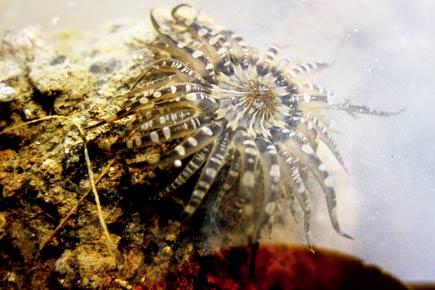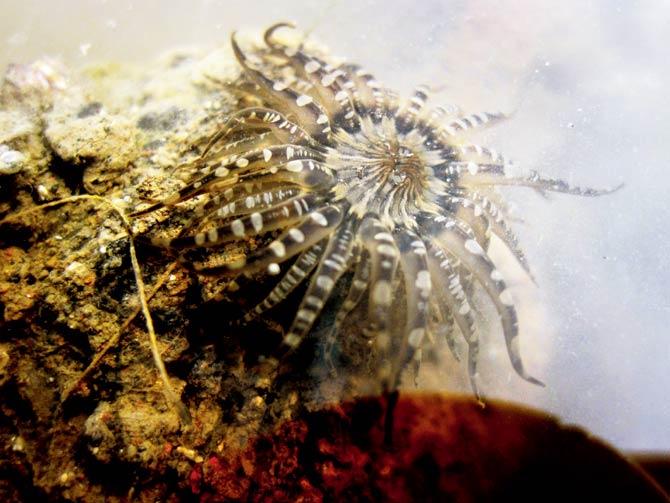Anant Chaturthi may be over, but the city is still worshipping Ganesha idols made by artisans from across the country as many communities keep idols up to 21 days

 Anant Chaturthi may be over, but the city is still worshipping Ganesha idols made by artisans from across the country as many communities keep idols up to 21 days. Most of these idols are made of non-biodegradable material called Plaster of Paris (POP) and painted with colours laden with heavy metals, such as lead, chromium, zinc or aluminum. These idols are immersed with much fanfare in the Arabian Sea or local rivers, lakes and ponds, causing grave damage to the flora and fauna. A sizeable quantity of local catch comprising clams, oysters, shrimps, fish and other shellfish caught along Mumbai’s coastline is consumed by residents on a daily basis.
Anant Chaturthi may be over, but the city is still worshipping Ganesha idols made by artisans from across the country as many communities keep idols up to 21 days. Most of these idols are made of non-biodegradable material called Plaster of Paris (POP) and painted with colours laden with heavy metals, such as lead, chromium, zinc or aluminum. These idols are immersed with much fanfare in the Arabian Sea or local rivers, lakes and ponds, causing grave damage to the flora and fauna. A sizeable quantity of local catch comprising clams, oysters, shrimps, fish and other shellfish caught along Mumbai’s coastline is consumed by residents on a daily basis.

Sea anemone
As a city surrounded by the sea and dissected extensively by creeks, the safety and survival of its natural inhabitants and wild creatures is as much the responsibility of the citizens as it is of the government. However, most of us are completely oblivious to the diversity that thrives in these seemingly murky waters of Mumbai. If you take off your dark glasses and zoom in through the eyes of a curious child with a magnifying glass , the city’s marine treasures will delight you.
Without exaggeration, our coastline thrives with dozens of varieties of conches, shells, fishes, shrimps, corals and marine algae. There are many sightings of dolphins, hundreds of migratory gulls, nearly a dozen species of crabs and an occasional shark, sting ray and eel that end up in a fisherman’s basket at the Sassoon dock. But the real tenacious creatures to look for are those that are fixed to the rocks and tetrapods in the inter-tidal zone.
Not all of Mumbai’s beaches are sandy as some have varied substrates of rock, mud and clay. These inter-tidal zones are a veritable mine for curious, amateur marine biologists. Tiny pools lined by blistering barnacles, timid shrimps, an occasional octopus attempting to capture Gobi fish with blotched markings or starfish trying to escape the beaks of migratory waders — there is so much action going on, till the sea reclaims its domain during the high tide. In the creeks, mangroves hide hundreds of creatures among its stilt roots, where mud-skippers and crabs attempt to escape the jaws of the resident dog-faced snakes. Among both these regions, you’ll find stinging, tentacled sea anemones fixed to the rocks or any hard substrate, trying their luck to hunt down passing fish or other marine invertebrates.
The diversity of sea anemones (pronounced as see-annie-money) across the world has been poorly studied and that of Mumbai coast is virtually undocumented. While all sea anemones have stinging cells with varying intensity of venom, they use it largely for capturing food and evading predators. This trait is exploited by many obligatory symbiotic creatures, such as anemone shrimps, crabs and fish, who have evolved colorations to match its host, the anemone. The most famous of these associations is with the clownfish, who are immune to its stings. The animation film Finding Nemo introduced us to the varied creatures of the underwater world. This included the sea anemone, which camouflaged Nemo (a variety of clownfish), and his family. The anemone protects its inhabitants and their eggs while they drop crumbs of food for the sessile (fixed) anemone.
In recent years, researchers have been conducting studies on the venom toxicity of various sea anemones, to exploit their traits to impact human central nervous, hepatic (liver) and urinary systems. But there are hardly any medicines created from these venoms, just yet. Most scientists are yet stuck in understanding their ecological role. Another commensalistic association studied by undergraduate biologists is that between a sea anemone and the hermit crabs, who carry anemones to newer hunting grounds.
Sadly, the aquarium industry has threatened the survival of anemones, which are slow breeders and poached from the wild to be used as living decorations in tanks. The aquarium environment and artificial food nurtures the clownfish, but starves the anemones. As a result, all associated wild dependents of the anemone, such as prawns and shrimps, are being affected. However, we still don’t know whether clownfish — hiding in our anemones — are found off the coast of Mumbai. So, if you are a diver and own a waterproof camera, click away. Who knows you might find Mumbai’s Nemo.
Write in to Anand Pendharkar at sproutsonline@gmail.com
 Subscribe today by clicking the link and stay updated with the latest news!" Click here!
Subscribe today by clicking the link and stay updated with the latest news!" Click here!









